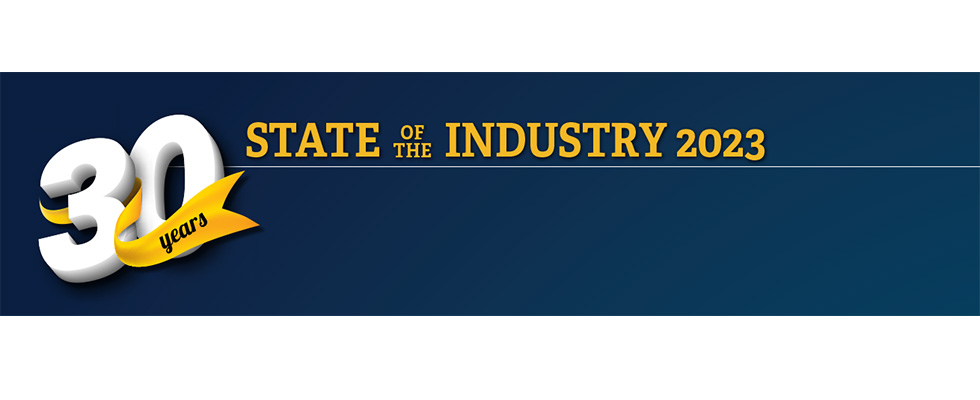
Industrial Flow Solutions President John Wilson (JW) and Vice President of Sales & Marketing Andrew Frisbie (AF) answered the following questions from Pumps & Systems for our 2023 State of the Industry issue.
Pumps & Systems is celebrating our 30th anniversary in 2023. What do you think has made the biggest impact on the industry in the last 30 years? What do you think needs to happen to push the industry forward in the next 30?
JW: Globalization of supply chains and technology has created significant benefits in terms of access to new markets, raw materials and talent. This has created the need to improve quality and performance to meet a broad array of customer expectations. On the downside, many have experienced recent challenges with respect to the global supply chain. While there have been tremendous gains, the effects of the supply chain challenges will be felt for several years to come.
AF: Looking forward, I believe we need more fully adopted, embedded, predictive and proactive intelligence in pump systems. Operators and maintenance staff have multiple demands and simplifying the troubleshooting and maintenance cycles while improving efficiency and uptime will benefit the entire industry.
What are your thoughts regarding Build America, Buy America? How has that impacted your company?
JW: I believe this program will greatly benefit and accelerate the upgrading of the aging infrastructure in the USA. We have proactively chosen to source key components domestically to comply with the BABA requirements, and we will continue to identify opportunities to best support the infrastructure programs.
AF: One of the challenges of this program is that there is still significant confusion surrounding applicability of the content rules. There have been several documents published regarding waivers for certain product and project types, as well as potential exemption due to cost implications. We need to bring additional clarity and simplicity to this program to both help suppliers become compliant and allow regulators to consistently enforce the rules.
How have any price increases of products or materials impacted you or your company?
JW: We have felt the impact of the current inflationary environment. Beyond commodity material inflation, we continue to see significant volatility in price and availability of electronic components. As a result, we have partnered with our strategic suppliers to increase our inventory levels to minimize lead-time impacts and to support overall customer demand.
What needs to happen in regard to industry improvements in the short term?
AF: As pump manufacturers develop new technologies to improve efficiency, enhance safety and reduce total cost of ownership, there needs to be more efficient, clearly-outlined paths to approval of these technologies. The current regionalized, fragmented and sometimes bureaucratic processes of approval slows the introduction and adoption of breakthrough technologies that would benefit operators and owners alike.
What issues have you seen with any material shortages or supply chain issues?
JW: While there have been pockets of improvement in the past year, challenges remain with material availability and broader logistics. Repeated COVID-related lockdowns in China, combined with the fallout of the Russia/Ukraine conflict, have stunted the recovery efforts for raw materials. Also, while the global logistics challenges are easing, there remains a great deal of variability in the ability to receive material.
What industry trends are you seeing as we go into 2023?
AF: Two key trends that stand out today:
- Workforce attrition continues to drive a need to attract new skilled labor to the industry and develop products that require less hands-on/on-site interaction.
- Remote asset monitoring and asset optimization are becoming essential. Operators simply don’t have the luxury of time and budget not to get the most out of their pumping assets.
What’s on your mind/what are you most concerned about?
JW: The growing concern about a market slow down or recession is causing many customers, suppliers and OEMs to take a more cautious approach to spend, especially with larger capital expenditures. This comes at a time when many OEMs have increased staffing and stock levels to support demand and offset supply chain challenges.
What are you most looking forward to in 2023?
JW: Continuing to invest in and bring new technology and solutions to the marketplace. There is tremendous opportunity to introduce solutions that provide improved intelligence and performance.

